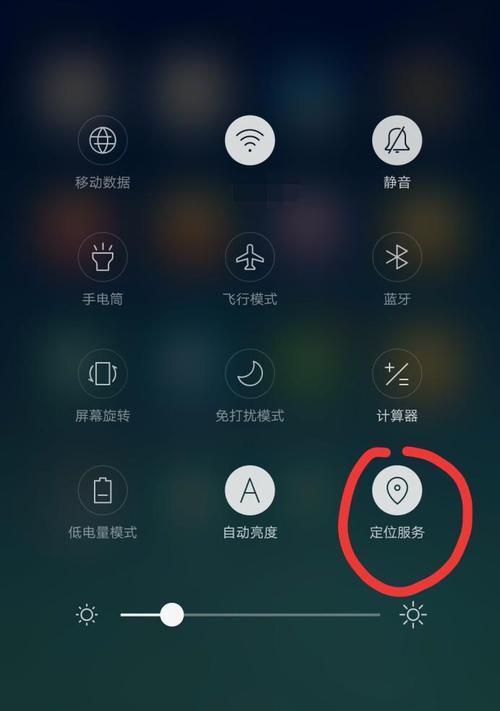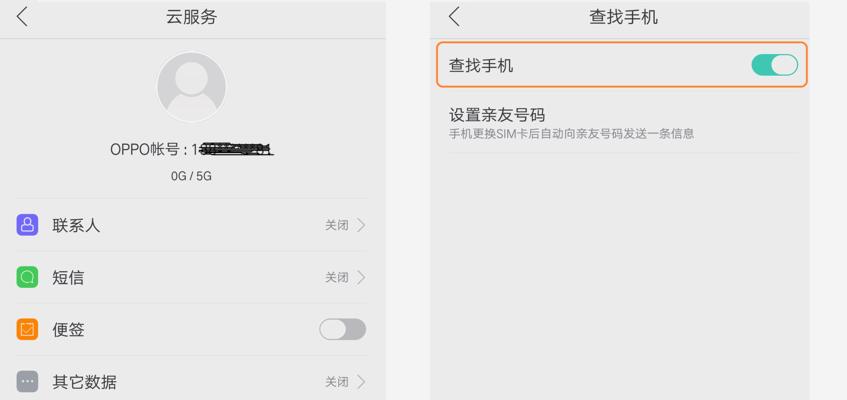 Mobile Tutorial
Mobile Tutorial
 Android Phone
Android Phone
 How to solve the problem of forgetting the password of oppo mobile cloud service (forgot the password of oppo mobile cloud service? Don't worry, there is a solution here!)
How to solve the problem of forgetting the password of oppo mobile cloud service (forgot the password of oppo mobile cloud service? Don't worry, there is a solution here!)
How to solve the problem of forgetting the password of oppo mobile cloud service (forgot the password of oppo mobile cloud service? Don't worry, there is a solution here!)
php editor Zimo will introduce to you how to solve the problem of forgetting the password of oppo mobile cloud service. Forgot your oppo mobile cloud service password? Don't worry, we have simple and effective solutions. Through the following steps, you can easily recover and reset your OPPO mobile cloud service password so that you can continue to enjoy the convenience and functions brought by the cloud service. No need to worry about forgotten passwords, we will help you solve this problem. Read on to learn the detailed steps.

1. Find the oppo mobile cloud service password reset option

Find and open the oppo mobile cloud service application" Forgot Password" or "Reset Password" option. This can usually be found on the login screen or in settings.
2. Reset oppo mobile cloud service password through mobile phone number
You can try to reset the password through the bound mobile phone number, if you cannot find the option to reset the password in the previous step. Select "Reset password via phone number" and follow the on-screen prompts, option.

3. Use a verified email to reset the oppo mobile cloud service password
You can choose to use a verified email to reset the password, if it is not bound The specified mobile phone number or the bound mobile phone number cannot receive the SMS verification code. And follow the instructions in the email and enter your verified email address.
4. Find the oppo mobile cloud service password retrieval tool
You can try to find the password retrieval tool officially provided by oppo. If none of the above methods can solve the problem. And download the tool suitable for your mobile phone model and operating system, and search for relevant information on the oppo official website or forum.
5. Contact oppo customer service for help
You can try to contact oppo customer service for help. If you still can’t solve the problem by yourself. and describe your problem, providing the authentication information they require. They will guide you further or provide other solutions.
6. Submit oppo mobile cloud service password reset application
You may consider submitting an oppo mobile cloud service password reset application, if the above methods still cannot solve the problem. And fill out the application form and search for relevant information on the oppo official website or forum. Please provide accurate information when filling out so that the application can be successfully completed.
7. Wait for oppo mobile cloud service password reset
You need to wait patiently for oppo official processing, once you submit the password reset application. They will contact you within a few business days via or other means, usually.
8. Reset oppo mobile cloud service password through security questions
You can try to reset oppo mobile cloud service password by answering security questions, and remember the answer if you have set security questions before . Select the "Reset password with security questions" option and follow the on-screen prompts.
9. Reset the oppo mobile cloud service password and then log in again
You need to use the new password to log in to the oppo cloud service application again, no matter which method is used to successfully reset the oppo mobile cloud service password . Enter your new password and log in.
10. Create a strong password to prevent forgetting
It is recommended that you create a strong password and keep it properly to avoid forgetting the OPPO mobile cloud service password again. Use a combination of numbers and special characters, use letters, and change your password regularly.
11. Use password management tools to manage oppo mobile cloud service passwords
You can consider using password management tools to facilitate the management of multiple accounts and passwords. Avoid forgetting, so your OPPO Mobile Cloud Service passwords can be securely stored and automatically filled.
12. Create a backup to reduce the risk of data loss
It is recommended to regularly back up important data on your Oppo phone to the cloud service to avoid the risk of data loss. You will still be able to easily recover your data even if you forget your cloud service password.
13. Remind yourself to keep your password memorized
You can use some techniques to help you remember the password, make it different from other passwords, etc., when creating a new password or changing the password, if it has nothing to do with personal information. You can also write down your password and keep it in a safe place just in case you need it.
14. Use third-party software to recover passwords with caution
You should use third-party software with caution to recover passwords when solving the problem of forgotten passwords for oppo mobile cloud services. And carefully read relevant user reviews and feedback to choose trustworthy software.
15. Password protection awareness cultivation and security maintenance
It is very important to cultivate password protection awareness in order to reduce the occurrence of forgotten passwords. As well as using security measures such as two-factor authentication to protect your data, be wary of phishing websites and fraud, and regularly check and update passwords.
We have a variety of solutions to choose from. Forgetting the oppo mobile cloud service password may cause some trouble, but luckily. Using the password retrieval tool or seeking help from Oppo customer service, whether through the reset option, can help us regain access to cloud services, bind mobile phone numbers, and verify email addresses. We remind everyone to pay attention to the strength and memory skills when creating new passwords, and at the same time, back up data regularly and strengthen password protection awareness and security maintenance.
The above is the detailed content of How to solve the problem of forgetting the password of oppo mobile cloud service (forgot the password of oppo mobile cloud service? Don't worry, there is a solution here!). For more information, please follow other related articles on the PHP Chinese website!

Hot AI Tools

Undresser.AI Undress
AI-powered app for creating realistic nude photos

AI Clothes Remover
Online AI tool for removing clothes from photos.

Undress AI Tool
Undress images for free

Clothoff.io
AI clothes remover

Video Face Swap
Swap faces in any video effortlessly with our completely free AI face swap tool!

Hot Article

Hot Tools

Notepad++7.3.1
Easy-to-use and free code editor

SublimeText3 Chinese version
Chinese version, very easy to use

Zend Studio 13.0.1
Powerful PHP integrated development environment

Dreamweaver CS6
Visual web development tools

SublimeText3 Mac version
God-level code editing software (SublimeText3)

Hot Topics
 How to use sql datetime
Apr 09, 2025 pm 06:09 PM
How to use sql datetime
Apr 09, 2025 pm 06:09 PM
The DATETIME data type is used to store high-precision date and time information, ranging from 0001-01-01 00:00:00 to 9999-12-31 23:59:59.99999999, and the syntax is DATETIME(precision), where precision specifies the accuracy after the decimal point (0-7), and the default is 3. It supports sorting, calculation, and time zone conversion functions, but needs to be aware of potential issues when converting precision, range and time zones.
 How to create oracle database How to create oracle database
Apr 11, 2025 pm 02:36 PM
How to create oracle database How to create oracle database
Apr 11, 2025 pm 02:36 PM
To create an Oracle database, the common method is to use the dbca graphical tool. The steps are as follows: 1. Use the dbca tool to set the dbName to specify the database name; 2. Set sysPassword and systemPassword to strong passwords; 3. Set characterSet and nationalCharacterSet to AL32UTF8; 4. Set memorySize and tablespaceSize to adjust according to actual needs; 5. Specify the logFile path. Advanced methods are created manually using SQL commands, but are more complex and prone to errors. Pay attention to password strength, character set selection, tablespace size and memory
 How to update the image of docker
Apr 15, 2025 pm 12:03 PM
How to update the image of docker
Apr 15, 2025 pm 12:03 PM
The steps to update a Docker image are as follows: Pull the latest image tag New image Delete the old image for a specific tag (optional) Restart the container (if needed)
 How to delete all data from oracle
Apr 11, 2025 pm 08:36 PM
How to delete all data from oracle
Apr 11, 2025 pm 08:36 PM
Deleting all data in Oracle requires the following steps: 1. Establish a connection; 2. Disable foreign key constraints; 3. Delete table data; 4. Submit transactions; 5. Enable foreign key constraints (optional). Be sure to back up the database before execution to prevent data loss.
 What are the common misunderstandings in CentOS HDFS configuration?
Apr 14, 2025 pm 07:12 PM
What are the common misunderstandings in CentOS HDFS configuration?
Apr 14, 2025 pm 07:12 PM
Common problems and solutions for Hadoop Distributed File System (HDFS) configuration under CentOS When building a HadoopHDFS cluster on CentOS, some common misconfigurations may lead to performance degradation, data loss and even the cluster cannot start. This article summarizes these common problems and their solutions to help you avoid these pitfalls and ensure the stability and efficient operation of your HDFS cluster. Rack-aware configuration error: Problem: Rack-aware information is not configured correctly, resulting in uneven distribution of data block replicas and increasing network load. Solution: Double check the rack-aware configuration in the hdfs-site.xml file and use hdfsdfsadmin-printTopo
 What types of files are composed of oracle databases?
Apr 11, 2025 pm 03:03 PM
What types of files are composed of oracle databases?
Apr 11, 2025 pm 03:03 PM
Oracle database file structure includes: data file: storing actual data. Control file: Record database structure information. Redo log files: record transaction operations to ensure data consistency. Parameter file: Contains database running parameters to optimize performance. Archive log file: Backup redo log file for disaster recovery.
 What are the oracle11g database migration tools?
Apr 11, 2025 pm 03:36 PM
What are the oracle11g database migration tools?
Apr 11, 2025 pm 03:36 PM
How to choose Oracle 11g migration tool? Determine the migration target and determine the tool requirements. Mainstream tool classification: Oracle's own tools (expdp/impdp) third-party tools (GoldenGate, DataStage) cloud platform services (such as AWS, Azure) to select tools that are suitable for project size and complexity. FAQs and Debugging: Network Problems Permissions Data Consistency Issues Insufficient Space Optimization and Best Practices: Parallel Processing Data Compression Incremental Migration Test
 How to clean all data with redis
Apr 10, 2025 pm 05:06 PM
How to clean all data with redis
Apr 10, 2025 pm 05:06 PM
How to clean all Redis data: Redis 2.8 and later: The FLUSHALL command deletes all key-value pairs. Redis 2.6 and earlier: Use the DEL command to delete keys one by one or use the Redis client to delete methods. Alternative: Restart the Redis service (use with caution), or use the Redis client (such as flushall() or flushdb()).





